There’s something deeply comforting about baking bread—especially when the recipe brings back memories of grandma’s baking. This Oatmeal Bread is one of those recipes for me. It came from our dear elderly neighbor in North Dakota, who was a known to be an excellent baker. She shared it with my Grandma before I was even born and it’s been a favorite ever since. I’m not sure how old this recipe is but it has to be at least 60 years old. Regardless, it has everything you’d want in loaf of homemade bread: hearty, slightly sweet, and full of old-fashioned goodness. Perfect for toast, sandwiches, or served alongside a cozy bowl of soup, it’s a slice of nostalgia that feels like a hug from grandma.
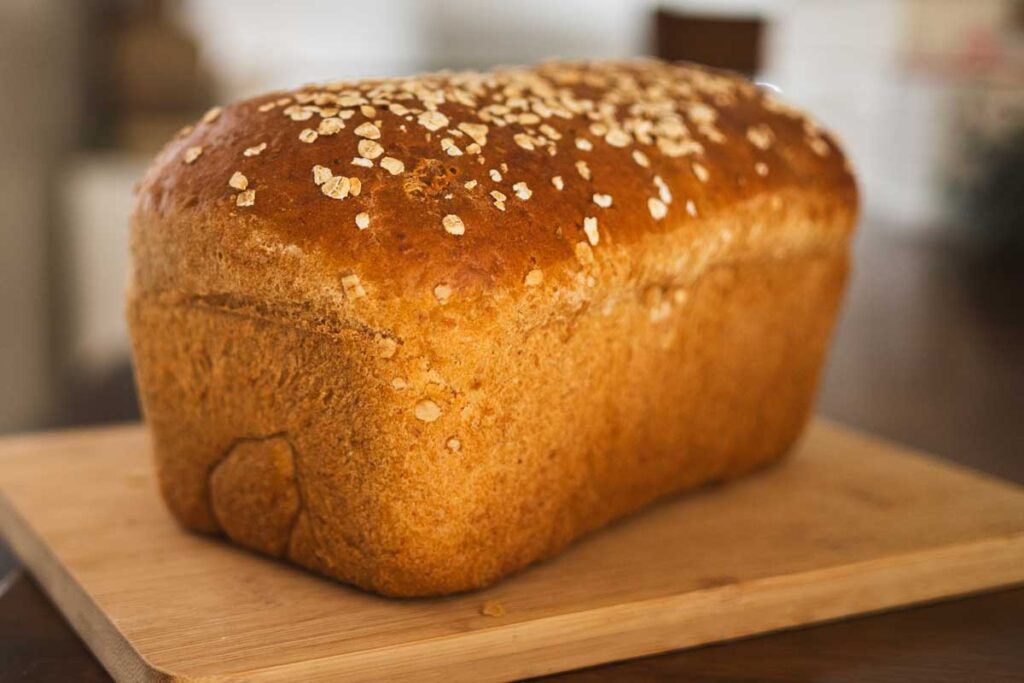
Video Step-By Step for Old-Fashioned Oatmeal Bread
If you’re more of a visual learner or want to see exactly how this delicious Oatmeal Bread comes together, check out my step-by-step video on YouTube! In the video, I’ll guide you through each stage of the process, from making the oat mixture to kneading the dough and achieving that perfect rise. Plus, you’ll get to see the finished loaf in all its golden, oat-sprinkled glory!
What Makes Oatmeal Bread Special?
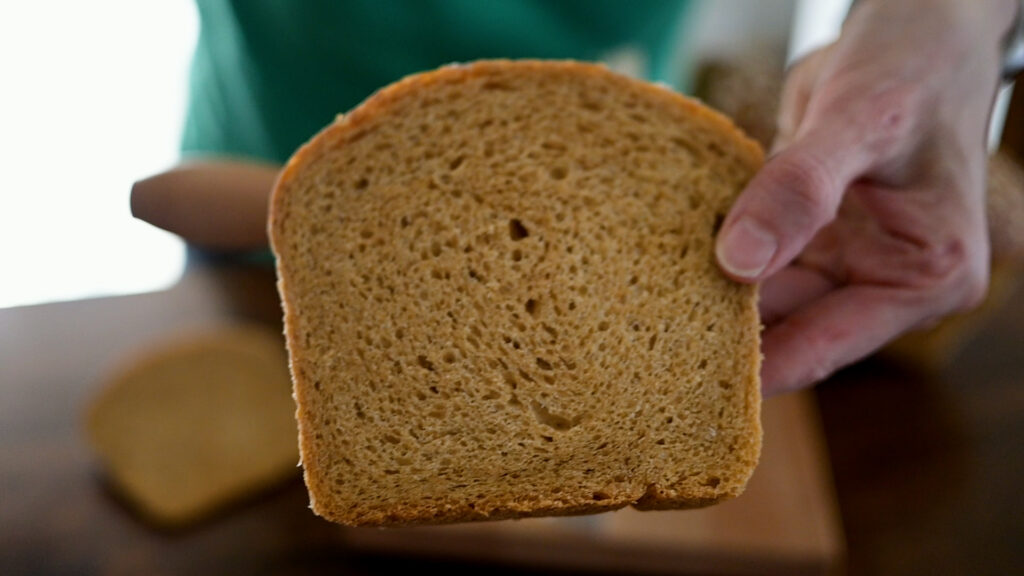
This bread has a distinctive flavor from molasses and the perfect texture thanks to the oats. It’s hearty yet soft, with a crust that’s slightly sweetened by a sprinkling of oats. It’s the kind of bread that sticks to your ribs and your heart.
I’ve halved the original recipe—which made two loaves—to make just one loaf. But if you want two, the recipe doubles easily and uses a standard package of yeast.
Single Loaf Ingredients
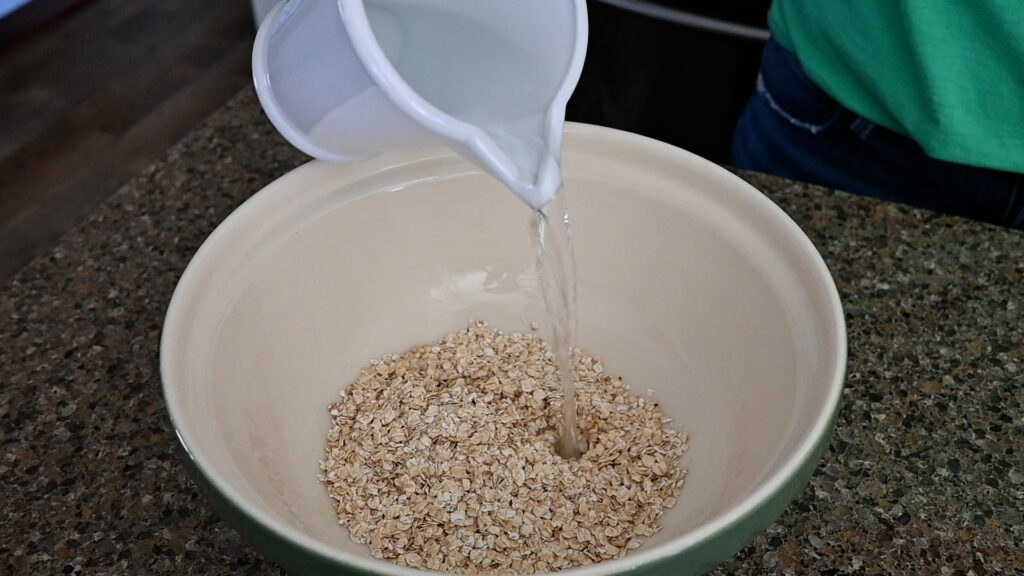
I’ve halved our neighbor’s original recipe to one 8 1/2 X 4 1/2-inch loaf pan. If you want to make two loaves, simply double these measurements and use a standard package of yeast.
- 1 cup quick-cooking oats
- 1 cup boiling water
- 2 Tbsp brown sugar
- 2 Tbsp + 2 tsp molasses
- 1 ½ tsp butter
- 1 ½ tsp salt
- ½ cup warm water (about 90-110°F for active dry or 120-130°F for rapid-rise)
- 1 1/8 tsp yeast (active dry or quick-rise)
- 2 ¼ to 2 ½ cups unbleached all-purpose flour
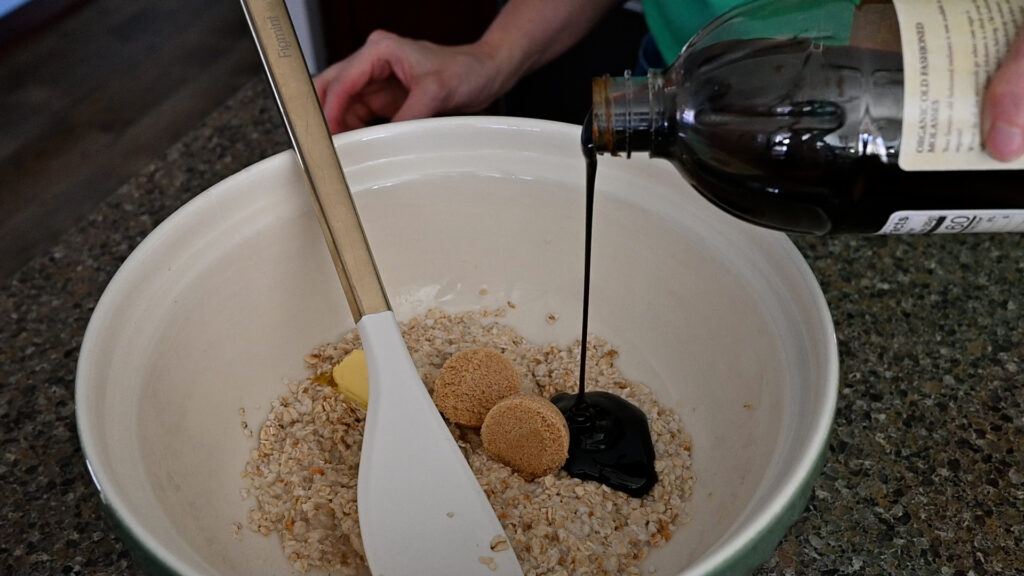
Double Loaf Ingredients
- 2 cups quick-cooking oats
- 2 cups boiling water
- ¼ cup brown sugar
- ⅓ cup molasses (112 g)
- 1 Tbsp butter
- 1 Tbsp salt 1
- 1 cup warm water (about 90-110°F for active dry or 120-130°F for rapid-rise)
- 2 ¼ tsp yeast (1 standard package)
- 4 ½ to 5 cups unbleached all-purpose flour
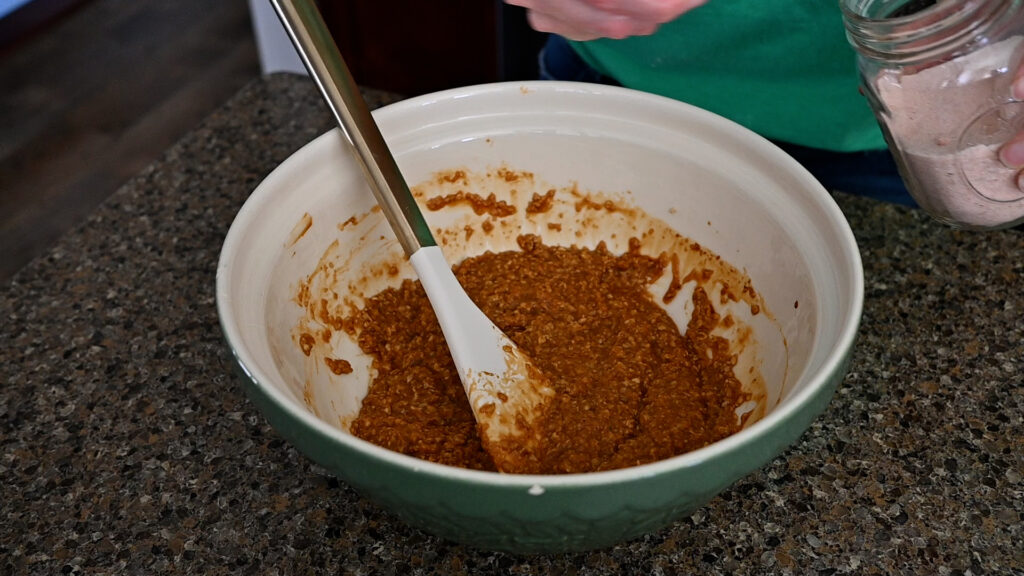
How to Make Old-Fashioned Oatmeal Bread
1. Prepare the Oat Mixture
In a large mixing bowl, combine 1 cup of quick-cooking oats with 1 cup of boiling water. Stir in the brown sugar, molasses, butter, and salt. Mix until well combined, then let it cool to lukewarm.
Tip: Cooling is crucial—adding yeast to a hot mixture can kill it.
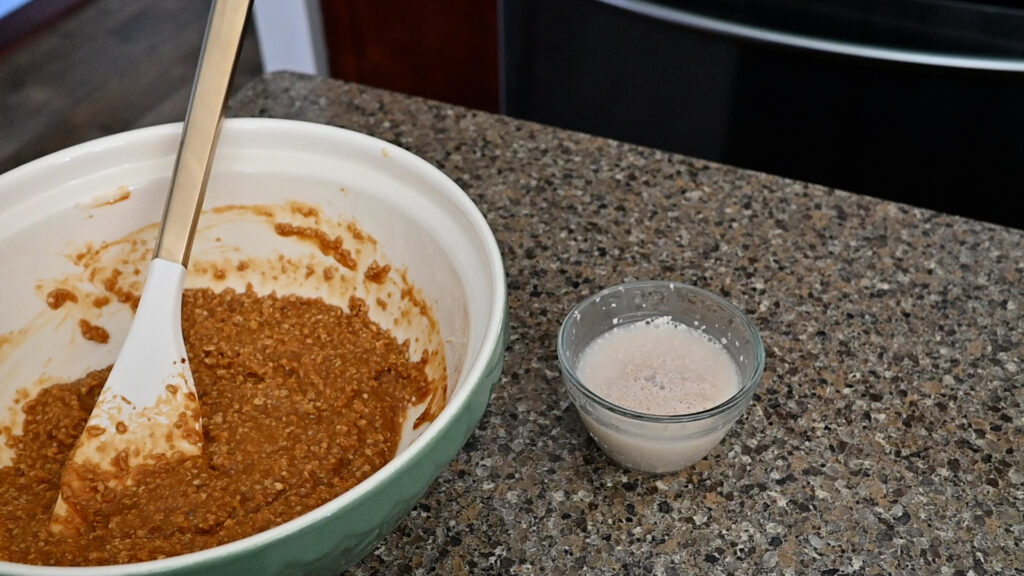
2. Activate the Yeast
While the oat mixture cools, dissolve the yeast in warm water. Let it sit for a few minutes until it’s foamy. This step, called proofing, ensures the yeast is alive and active.
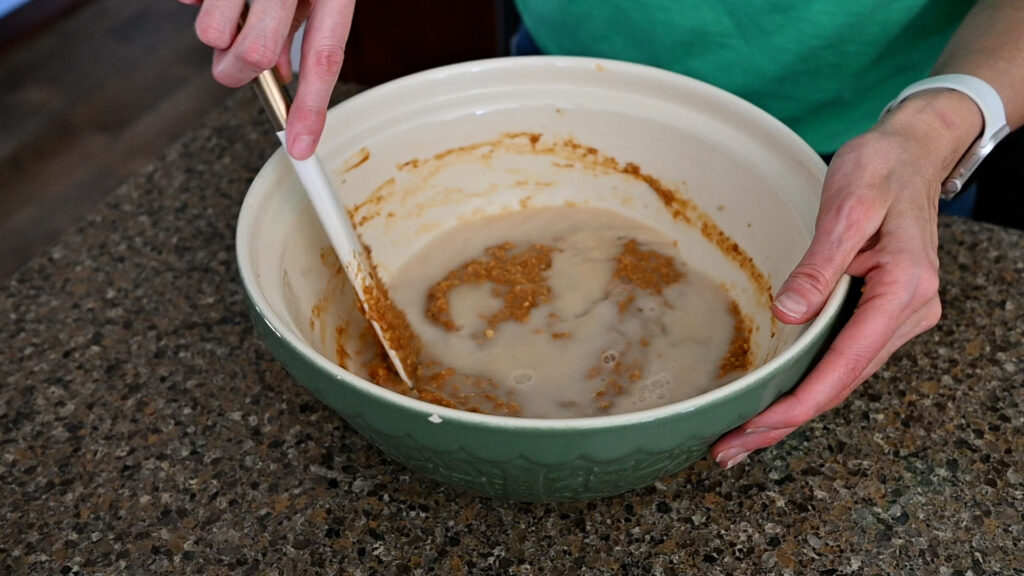
3. Combine and Rest
Add the proofed yeast to the oat mixture and stir well. Mix in 1 ½ cups of flour to create a firm sponge. Cover the bowl with a towel and let it rest for about 20 minutes. This allows the flour to hydrate, making the dough easier to knead later.
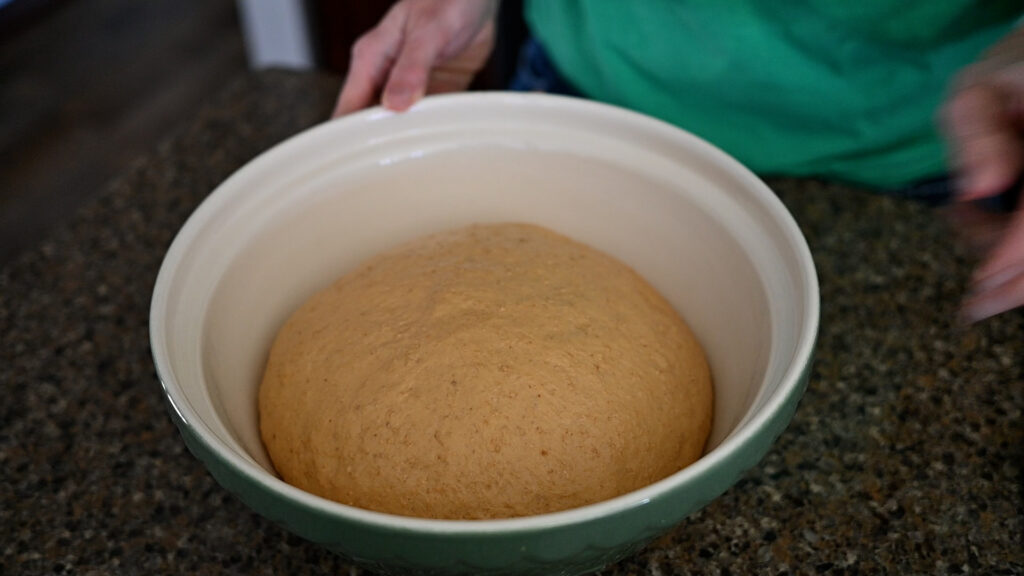
4. Knead the Dough
Gradually add more flour, kneading until the dough is tacky but not sticky. The dough should feel soft and pliable but not stick to your hands. Once kneaded, form the dough into a ball and place it in a greased bowl. Turn it to coat all sides, cover, and let it rise in a warm spot for about an hour or until it doubles in size.
Tip: To check if the dough has risen enough, use the poke test. Gently press your finger into the dough—if the indentation springs back slowly, it’s ready.
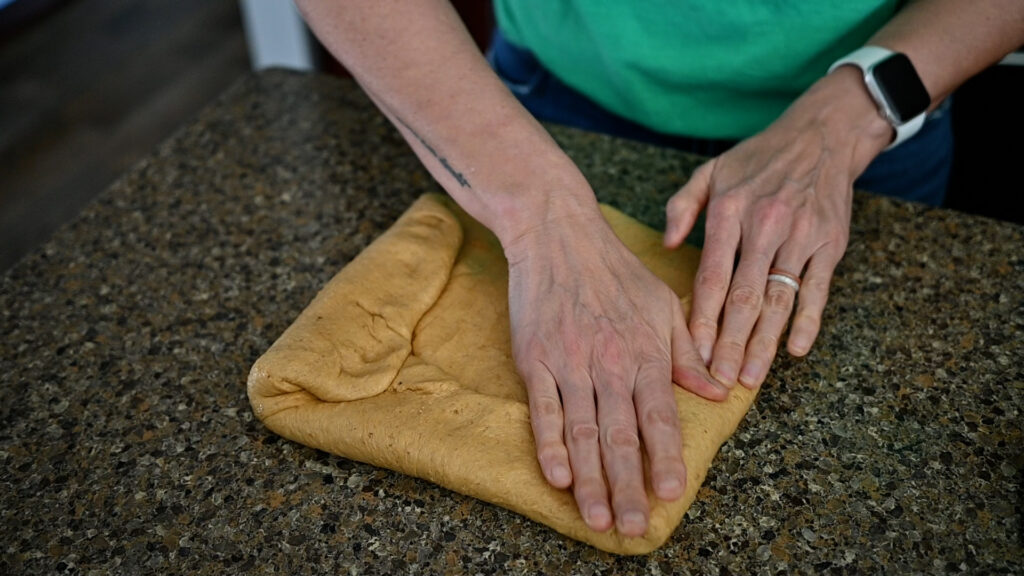
5. Shape the Dough
Turn the dough out onto a clean counter and flatten it to remove air bubbles. Fold the edges inward and roll it tightly, pressing out any trapped air. Place the dough seam-side down into a greased loaf pan.
Tip: Instead of cooking spray, I use my homemade pan release. Mix equal parts avocado oil, unbleached flour, and butter. It works beautifully and ensures the bread won’t stick.
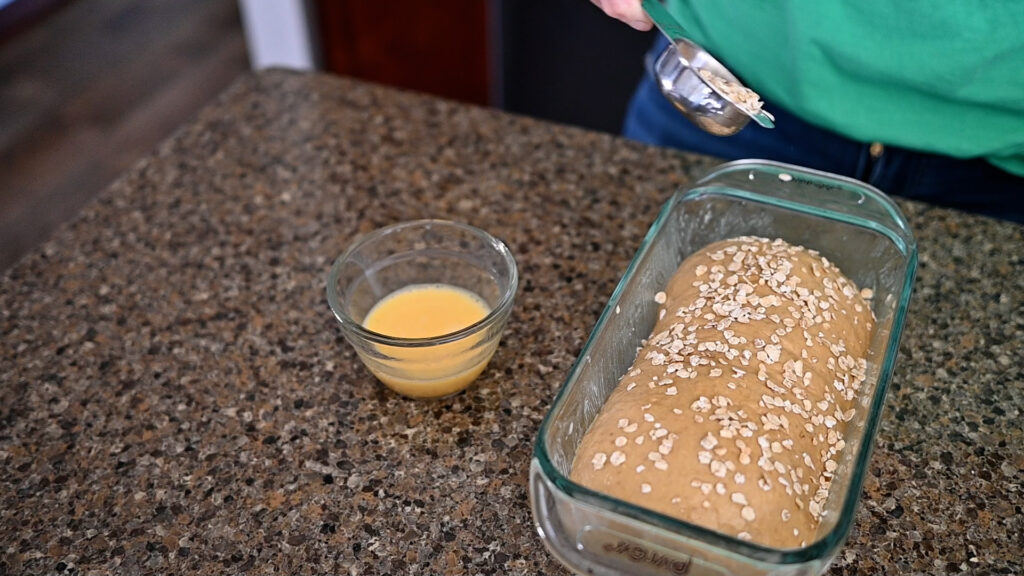
6. Second Rise and Topping
Brush the top of the dough with an egg wash made from 1 egg and 1 tablespoon of water, then sprinkle about a tablespoon of oats over the top. Cover and let the dough rise again until it domes slightly over the edge of the pan and the bread does not spring back when poked with a wet finger.
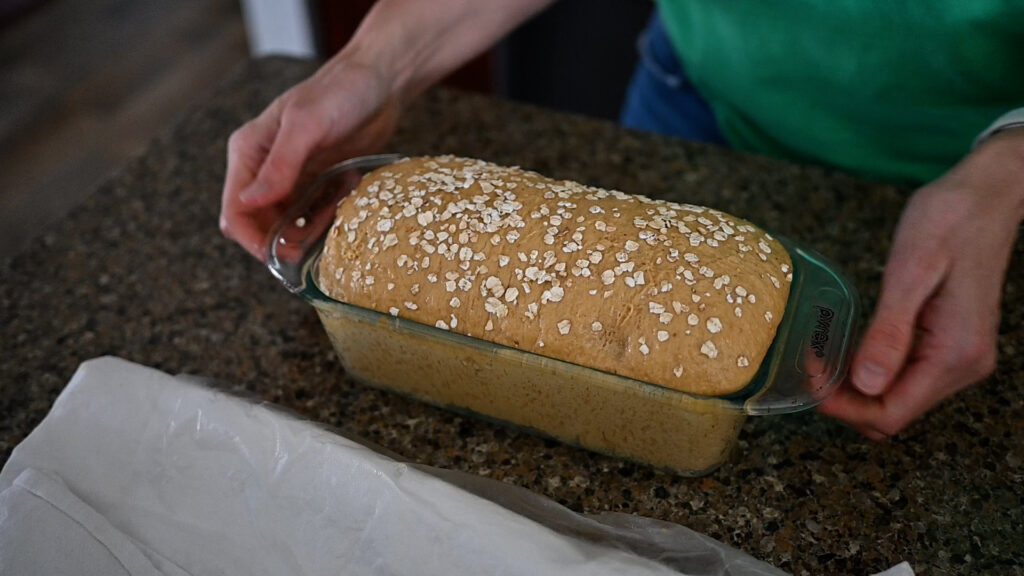
7. Bake the Bread
Preheat your oven to 325°F for a glass pan or 350°F for a metal one. Bake the bread for 60–70 minutes, or until the internal temperature reaches 190°F to 205°F. Let the bread cool in the pan for 5 minutes before transferring it to a wire rack.
8. Cool Completely
Let the bread cool completely but at least an hour before slicing. This step ensures the crumb sets properly and your bread will not be gummy.
Tips to Successfully Make Old-Fashioned Oatmeal Bread
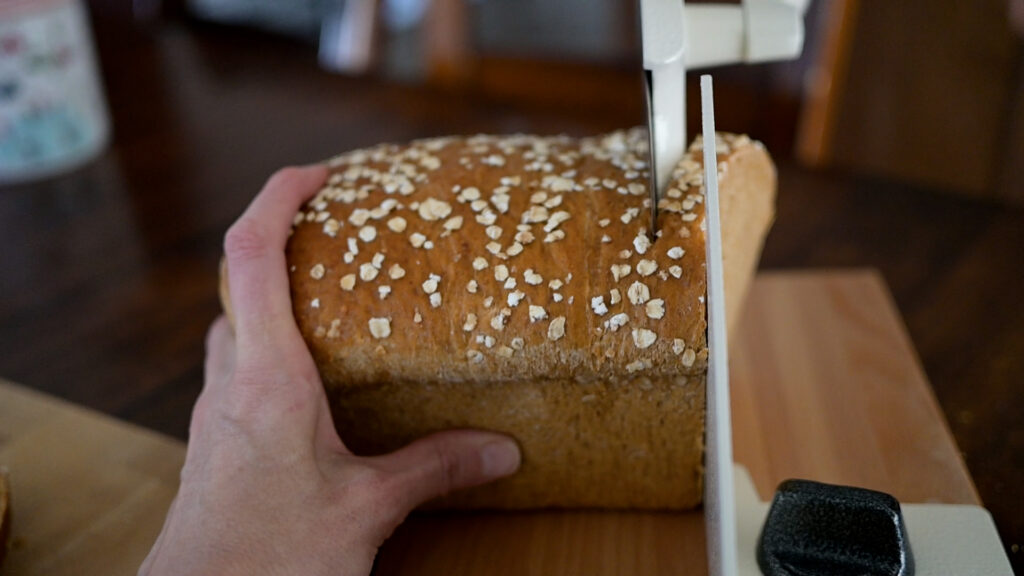
Yeast – To Proof or Not
I always go into detail on my videos about the importance of making adjustments for the type of yeast you are using. While it feels like I’m belaboring the point, this is probably the most important tip for making any type of commercially yeasted bread. There are 2 types of yeast most often available from the store. Keep these details in mind when you’re making bread.
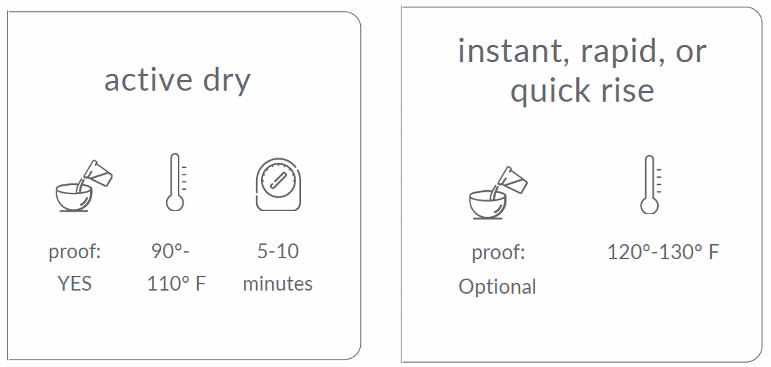
Kneading Time
Through the kneading process, you’ll keep adding flour to the dough until the dough does not stay on your hands. Since my oatmeal bread has a fine crumb you’ll want to knead by hand 10 to 15 minutes or 4 to 5 minutes with a stand mixer. Just be sure to give your mixer a couple minute break halfway through kneading.
Shaping the Loaf
To help get that fine crumb without unwanted air-pockets, press all the air of your dough out before you shape. I like to fold the outer edges in and then roll the dough up tightly, pulling and tucking it under. (check out my video if you’d like a demonstration).
Easy Pan Release
I recently switched to using a pan release for my baking and I LOVE it. This is a very simple mix of equal parts avocado oil (or another neutral oil), flour, & butter. I keep a small jar of this pan release in the refrigerator and use it for brushing in my pans.
Tools I Love for Baking This Bread
Baking bread is even more enjoyable when you have the right tools to make the process easier and more efficient. Over the years, I’ve discovered a few must-have products that I love using for homemade bread. From achieving perfectly even slices to ensuring your dough rises beautifully, these tools are game-changers for any bread baker!
- Kitchen Scale
- Dough Scraper
- Bench Scraper
- Mason Cash 2.85 Quart Bowl
- Glass Bread Loaf Pan (8 1/2 X 4 1/2-inch)
- Metal Bread Loaf Pan (8 1/2 X 4 1/2-inch)
- Zassenhaus Bread Slicer
Recipe for Old-Fashioned Oatmeal Bread
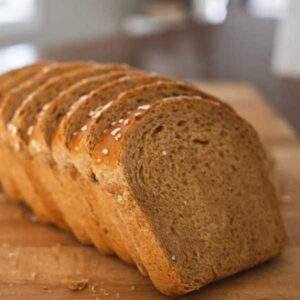
Old-Fashioned Oatmeal Bread
Description
Ingredients
1 Loaf:
- 1 c. quick-cooking oats
- 1 c. boiling water
- 2 Tbsp brown sugar
- 2 Tbsp + 2 tsp molasses, 56 g
- 1 ½ tsp butter
- 1 ½ tsp salt
- ½ c. warm water
- 1 ⅛ tsp yeast
- 2 ¼ to 2 ½ c. unbleached all-purpose flour
2 Loaves:
- 2 c. quick-cooking oats
- 2 c. boiling water
- ¼ c. brown sugar
- ⅓ c. molasses, 112 g
- 1 Tbsp butter
- 1 Tbsp salt
- 1 c. warm water
- 2 ¼ tsp yeast, 1 standard package
- 4 ½ to 5 c. unbleached all-purpose flour
Instructions
- Prepare the Oat Mixture: In a large mixing bowl, combine 1 cup of quick-cooking oats and 1 cup of boiling water. Stir in 2 tablespoons of brown sugar, 2 tablespoons plus 2 teaspoons of molasses (56 g), 1 ½ teaspoons of butter, and 1 ½ teaspoons of salt. Mix until well combined. Let the mixture cool to lukewarm.
- Activate the Yeast: In a small bowl, dissolve 1 1/8 teaspoons of yeast in ½ cup of warm water (about 110°F). Let sit for 5–10 minutes, or until the yeast is foamy and active.
- Combine and Rest: Add the proofed yeast to the cooled oat mixture. Stir in 1 ½ cups of unbleached all-purpose flour until a firm sponge forms. Cover the bowl with a clean kitchen towel and let rest for 20 minutes.
- Knead the Dough: Gradually add the remaining flour (about ¾ to 1 cup), kneading until the dough is tacky but not sticky. Knead for 8–10 minutes, or until the dough is smooth and elastic. Form the dough into a ball.
- First Rise: Lightly grease a large bowl and place the dough inside, turning to coat all sides. Cover with a towel or plastic wrap and let rise in a warm place for 1–1 ½ hours, or until doubled in size.
- Shape the Dough: Turn the dough onto a clean surface and press it flat to remove air bubbles. Fold the edges inward, then roll the dough tightly into a loaf shape. Place it seam-side down into a greased 8 ½ x 4 ½-inch loaf pan.
- Second Rise: Cover the loaf pan with a towel or plastic wrap and let the dough rise until it domes just above the edge of the pan, about 30 minutes. Brush the top of the dough with an egg wash (1 egg whisked with 1 tablespoon of water) and sprinkle with oats.
- Bake the Bread: Preheat the oven to 325°F for a glass pan or 350°F for a metal pan. Bake the bread for 60–70 minutes, or until the internal temperature reaches about 200 to 205°F. Remove the bread from the oven and let it cool in the pan for 5 minutes.
- Cool Completely: Transfer the bread to a wire rack and allow it to cool completely, at least 1 hour, before slicing. This ensures the crumb is set and prevents the bread from becoming gummy.
- Store the Bread: To keep your bread fresh, slice it once it has completely cooled. Store the slices in an airtight container or bread bag at room temperature for up to three days. For longer storage, freeze the slices by placing them in a freezer-safe bag. Frozen slices can be thawed at room temperature or toasted directly from frozen, maintaining their fresh-baked flavor and texture. This bread freezes beautifully and is perfect for enjoying later!
Nutrition
If you love this recipe, you should definitely try my Oatmeal Dinner Rolls! These rolls do not have molasses but they are hearty and so delicious! Until next time, happy baking!!
As an Amazon Associate, I earn from qualifying purchases at no extra cost to you. Thank you for your support!

1 thought on “Grandma’s Old-Fashioned Oatmeal Bread”